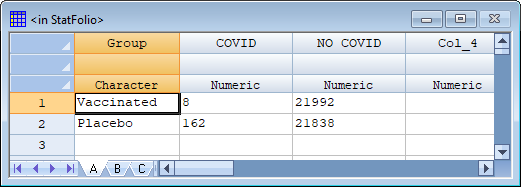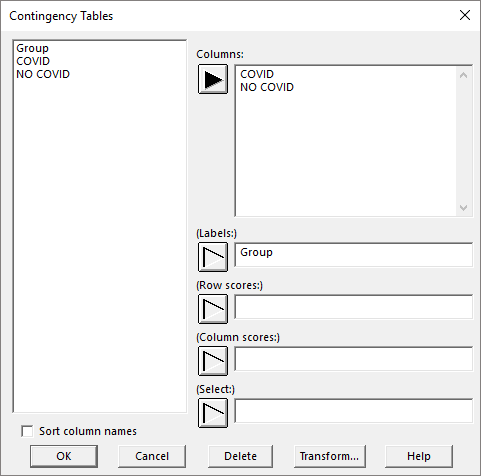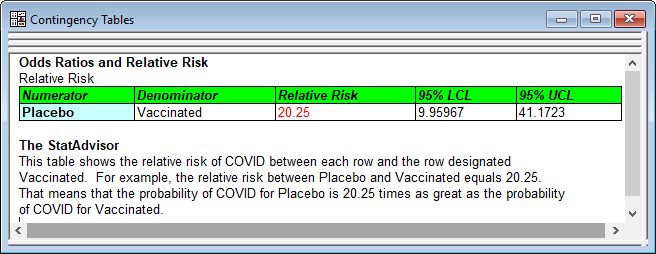
Published under: statistical analysis, frequency tables, data analysis, twoway tables, efficacy, relative risk
Results from the latest Phase 3 trials for Pfizer's and Moderna's COVID vaccines have stated that the vaccines are approximately 95% effective. When I heard that, I wondered exactly how they made that assessment. For example, the latest news from Pfizer stated that out of approximately 44,000 people that received either the vaccine or a placebo, 170 people contracted COVID-19. Of that 170, 162 had been given the Placebo while only 8 had received the vaccine. Expressed as a two-way table, these data are:
 Note: the row totals are approximate since the exact sample sizes were not available.
Note: the row totals are approximate since the exact sample sizes were not available.
Searching the Internet for a definition of vaccine efficacy, I found the following formula:

This reduces in the present case to dividing the additional number of non-vaccinated people that got the virus by the total number of non-vaccinated people that got the virus:

In other words, about 95% of the vaccinated people who would have been expected to get the virus didn't get it.
Another way of looking at the data is by assessing the relative risk of getting the virus if you were given the placebo instead of the vaccine. Here we may define relative risk as

For the current data, that’s just the number in the placebo group that contracted the virus divided by the number in the vaccinated group:

In other words, you're over 20 times as likely to get the virus if you haven't been vaccinated.
Note: the two metrics are related:

Using STATGRAPHICS 19 to analyze the results
While the point estimates are easy to calculate by hand, confidence intervals are harder. So I set up a simple datasheet in STATGRAPHICS 19:

I then selected Describe, Categorical Data, Two Factors, Contingency Tables (2-way) from the top menu and filled in the data input dialog box as shown below:

I found the following table particularly interesting:

With 95% confidence, you can assert that individuals who are not vaccinated are between 9.96 and 41.17 times as likely to get COVID as those who are vaccinated. This definitely suggests that the vaccine is worth taking once it's proven to be safe.
NOTE: using the relationship between RR and VE, we can also state with 95% confidence that the vaccine efficacy is between 89.96% and 97.57%.

 By:
By: 




